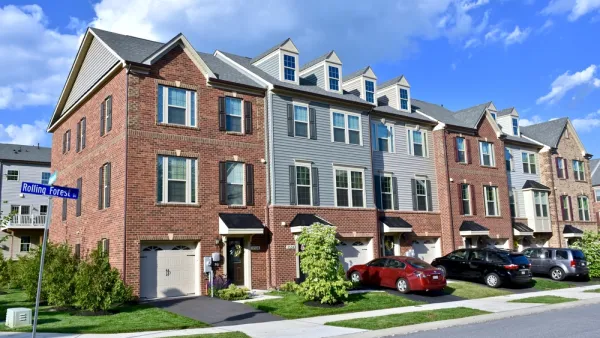Jed Kolko presents the findings of a study that examines the available stock of housing available to those earning the median income around the country in different cities around the country.
According to an article by Jed Kolko, a recent study of housing prices reveals that "compared with the longer-term past, homeownership still looks relatively affordable: home prices are still undervalued and mortgage rates remain near historic lows." In fact, "[in] most U.S. markets, the majority of homes for sale are within reach of the middle class, and buying is cheaper than renting in all of the 100 largest metros." The current report follows an inaugural study from last year.
The analysis pulls data on the prices of housing from Trulia, and defines middle class differently in each metro area under examination.
The study finds specifics about the many places where houses are still affordable for the middle class: "[in] 80 of the 100 largest U.S. metros, most of the homes for sale today are within reach of the middle class. In the most affordable housing markets, more than 80 percent of homes are within reach, with Akron topping the list at 86 percent. The 10 most affordable markets include eight in (or near) the Midwest, plus the southern markets of Columbia, SC, and Little Rock, AR. Five of the top 10 are in Ohio."
The less affordable places in the country shouldn't come as a surprise: "Seven of the 10 least affordable markets are in California, along with New York, neighboring Fairfield County, CT, and Honolulu. Only 14 percent of homes for sale in San Francisco are affordable to the middle class, even though median household income is higher in San Francisco than almost anywhere else in the country."
Kelko also provides analysis on the differences between markets. One conclusion he draws from the numbers: "In all, today’s unaffordable markets are likely to stay unaffordable. A collapse in demand is nothing to wish for; geographic constraints are nearly impossible to change; and strong political forces make building regulations difficult to relax."
FULL STORY: Where Buying a Home is Within Reach of the Middle Class

National Parks Layoffs Will Cause Communities to Lose Billions
Thousands of essential park workers were laid off this week, just before the busy spring break season.

Retro-silient?: America’s First “Eco-burb,” The Woodlands Turns 50
A master-planned community north of Houston offers lessons on green infrastructure and resilient design, but falls short of its founder’s lofty affordability and walkability goals.

Delivering for America Plan Will Downgrade Mail Service in at Least 49.5 Percent of Zip Codes
Republican and Democrat lawmakers criticize the plan for its disproportionate negative impact on rural communities.

Test News Post 1
This is a summary

Test News Headline 46
Test for the image on the front page.

Balancing Bombs and Butterflies: How the National Guard Protects a Rare Species
The National Guard at Fort Indiantown Gap uses GIS technology and land management strategies to balance military training with conservation efforts, ensuring the survival of the rare eastern regal fritillary butterfly.
Urban Design for Planners 1: Software Tools
This six-course series explores essential urban design concepts using open source software and equips planners with the tools they need to participate fully in the urban design process.
Planning for Universal Design
Learn the tools for implementing Universal Design in planning regulations.
EMC Planning Group, Inc.
Planetizen
Planetizen
Mpact (formerly Rail~Volution)
Great Falls Development Authority, Inc.
HUDs Office of Policy Development and Research
NYU Wagner Graduate School of Public Service




























